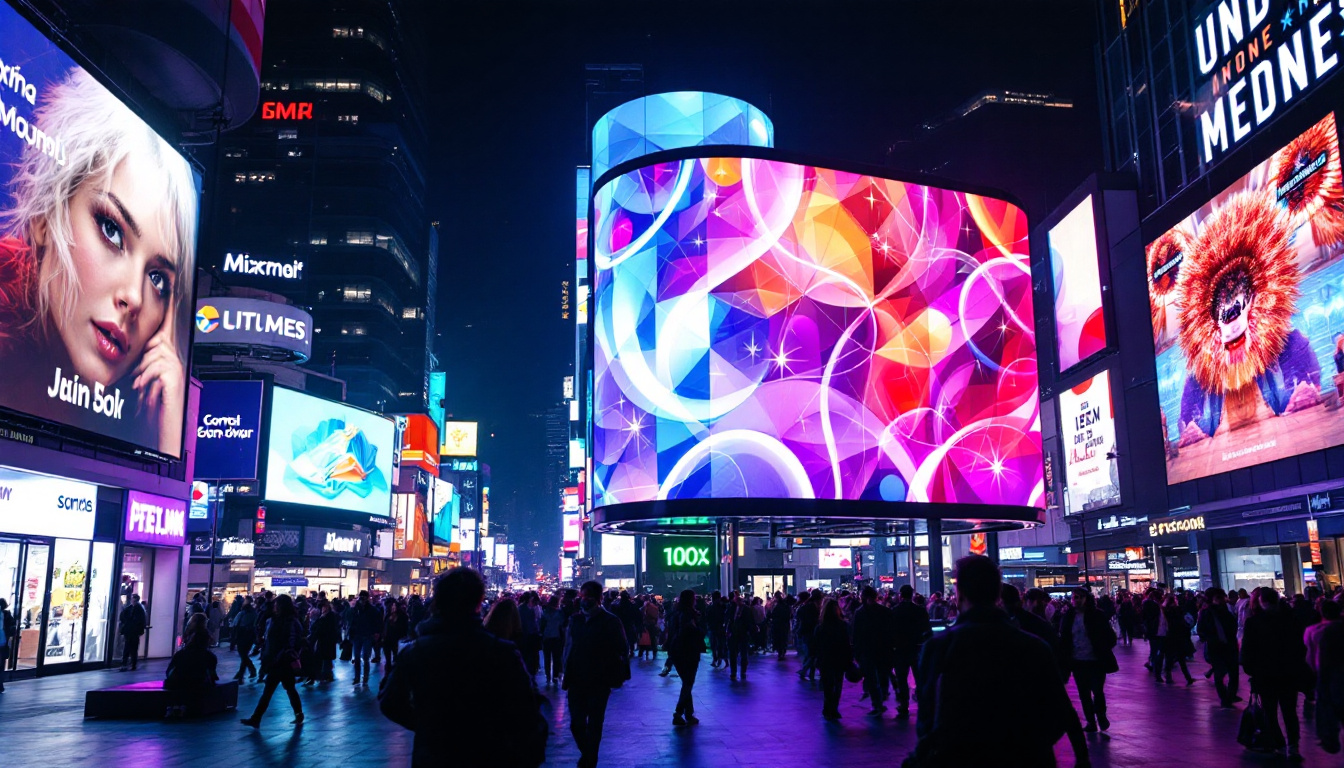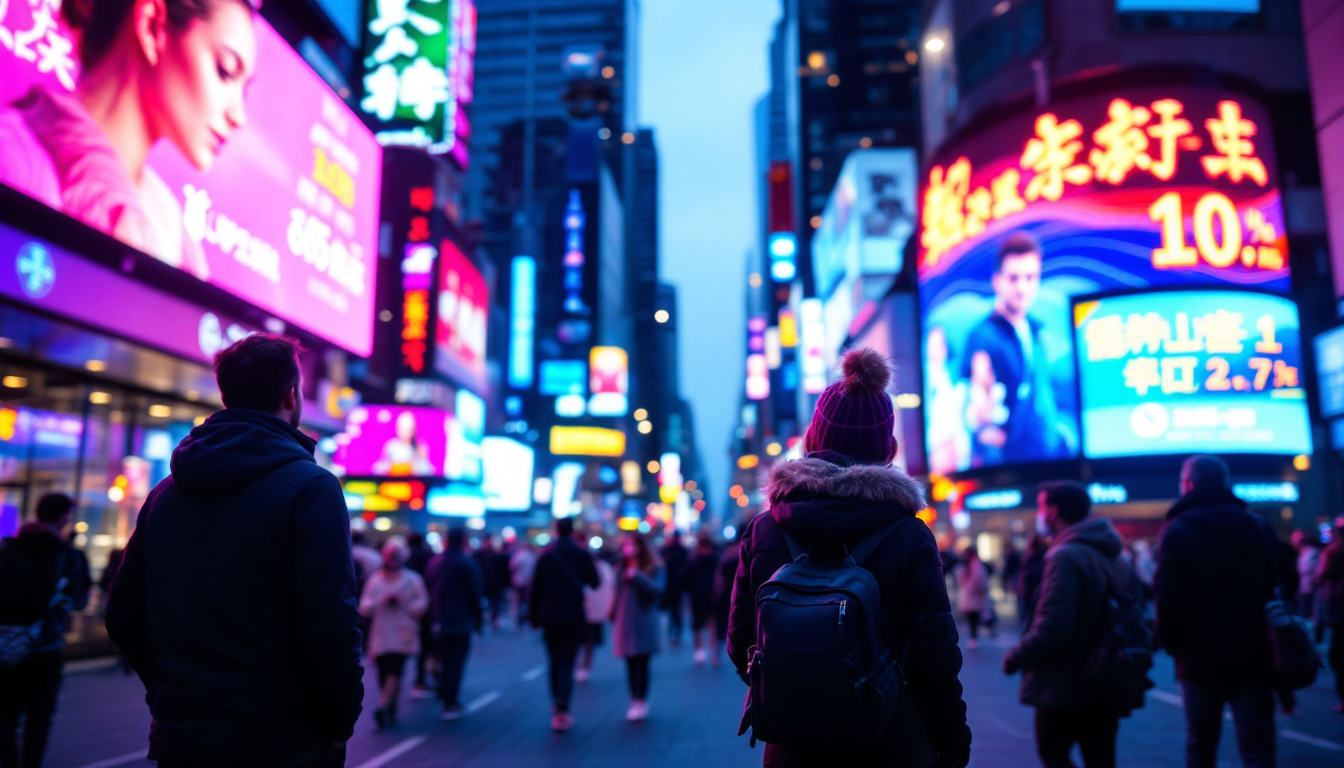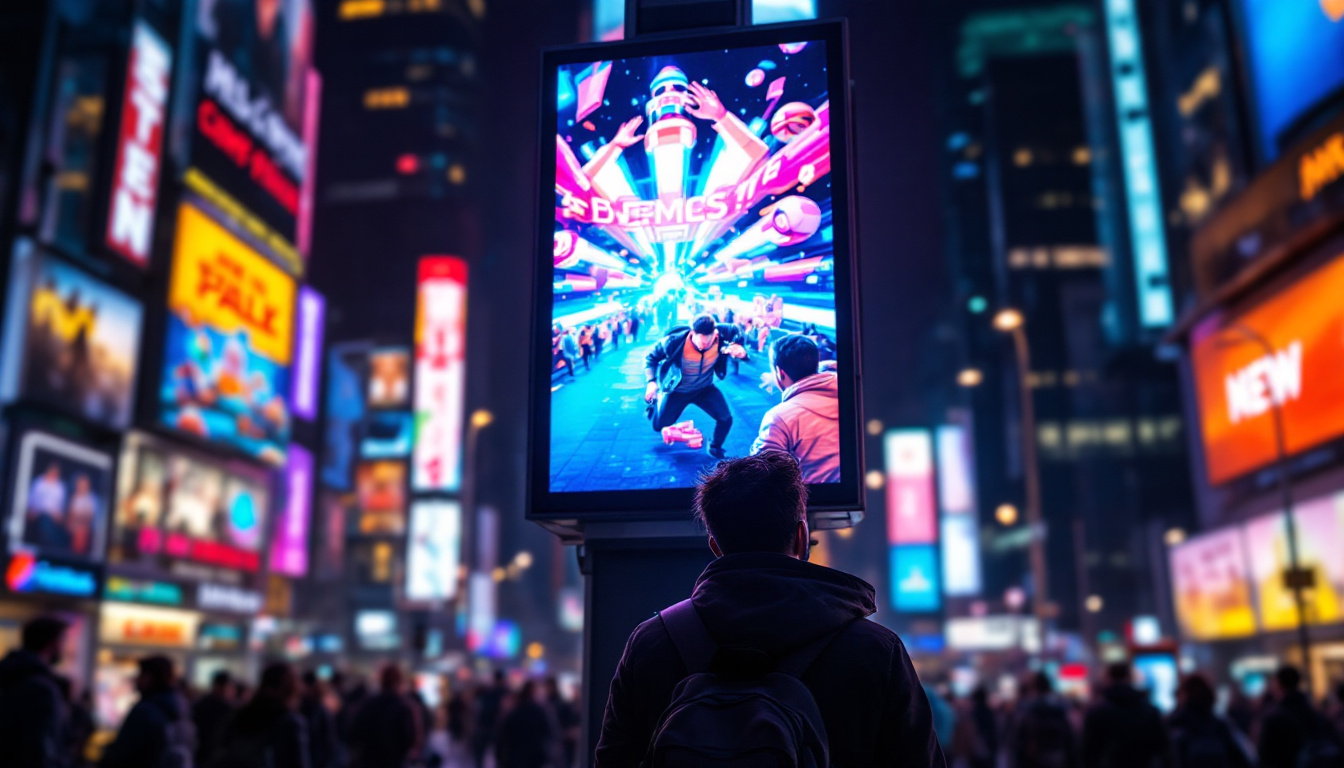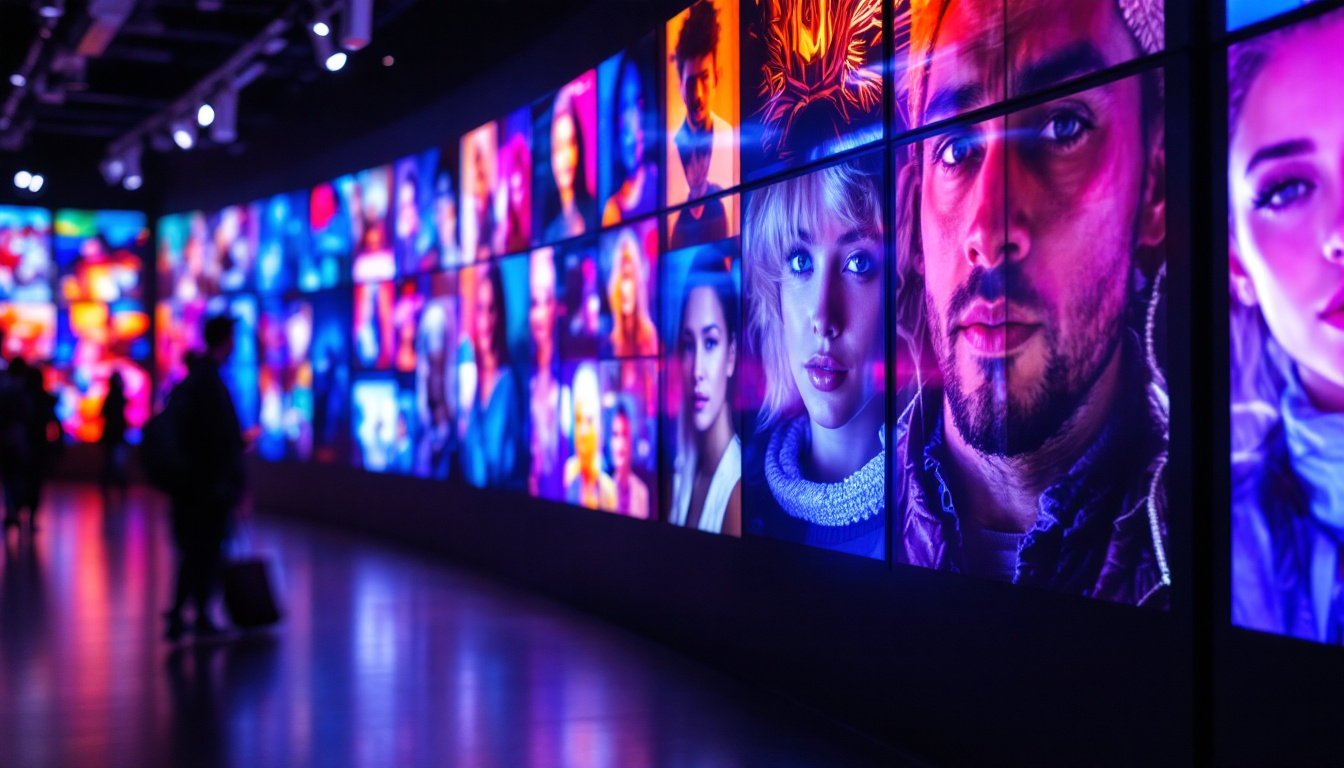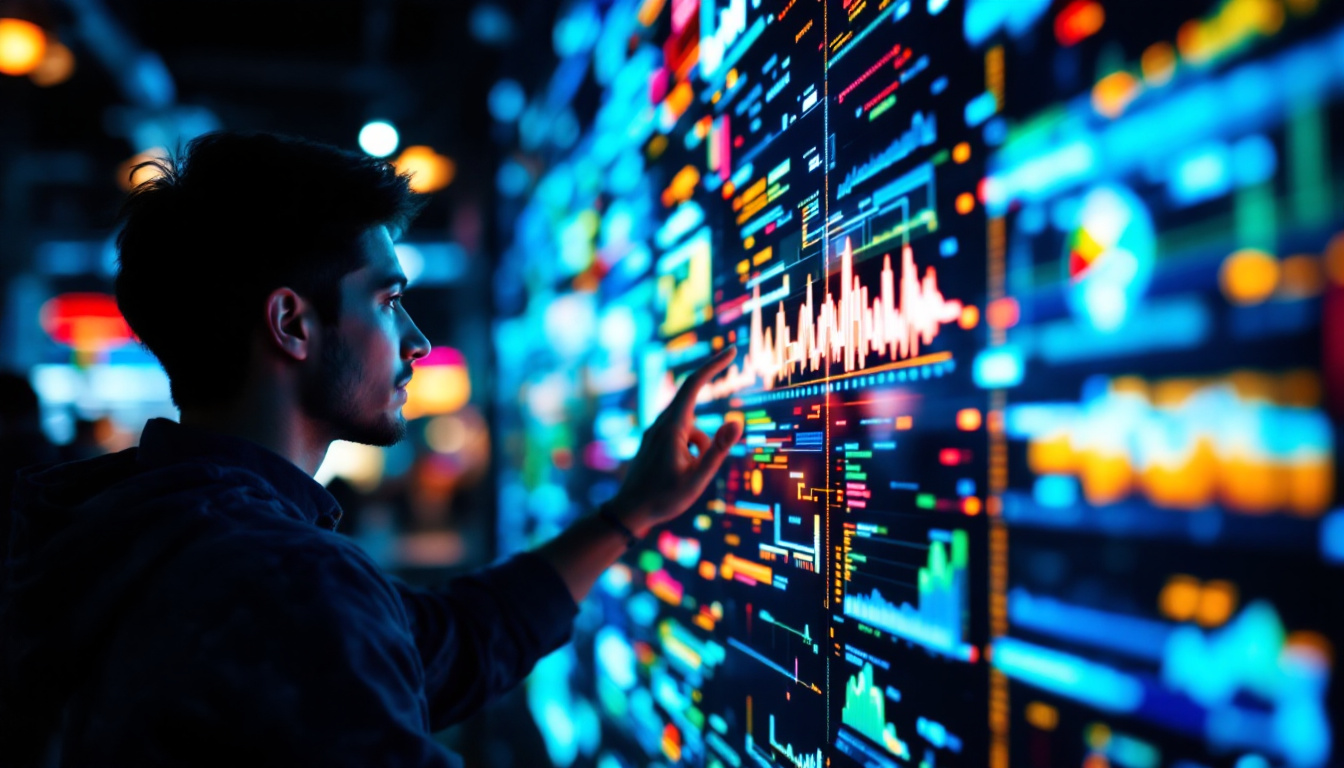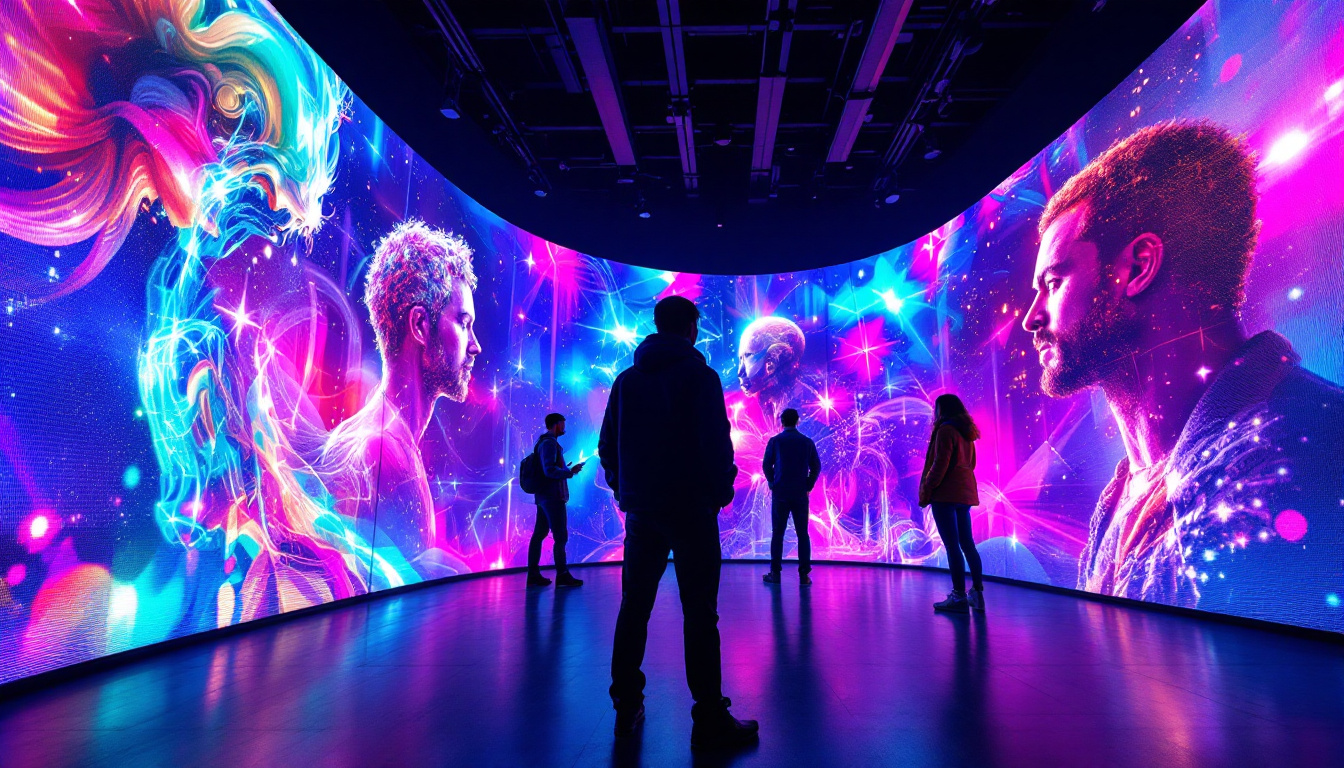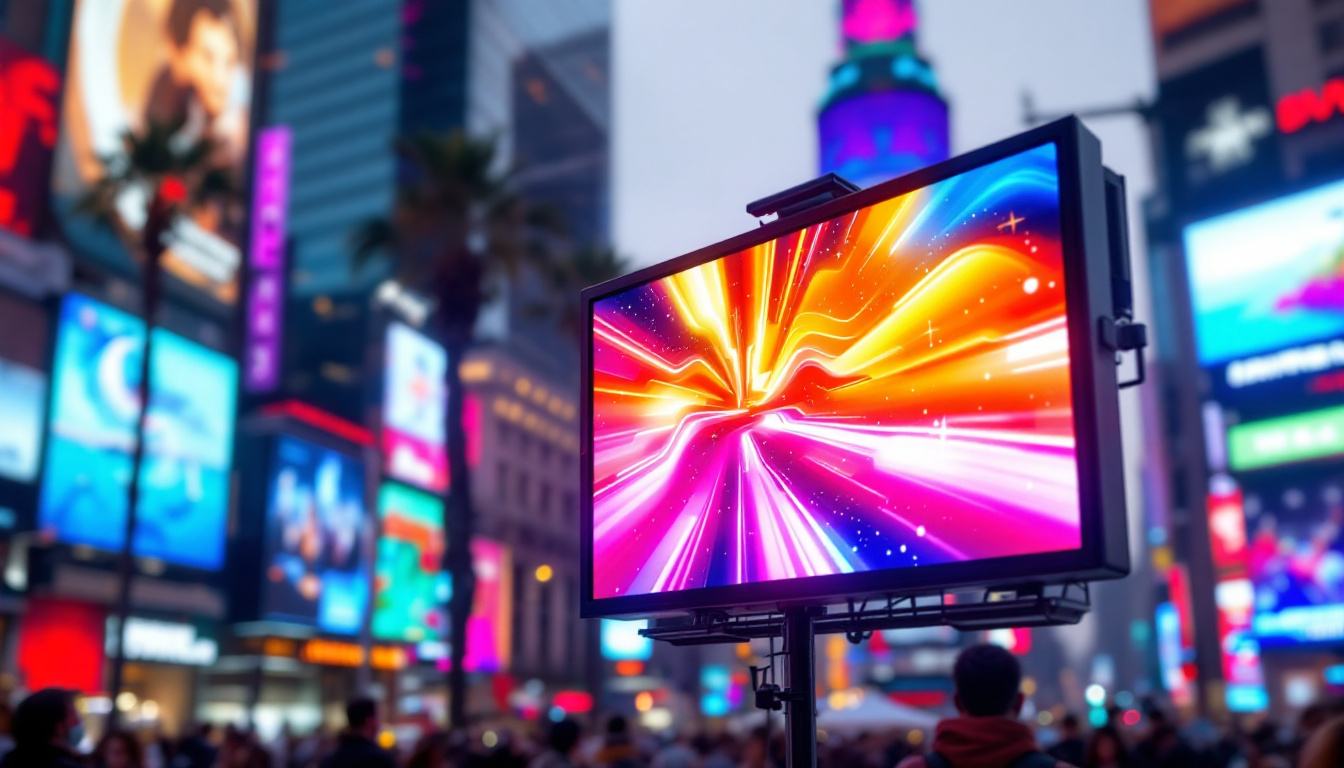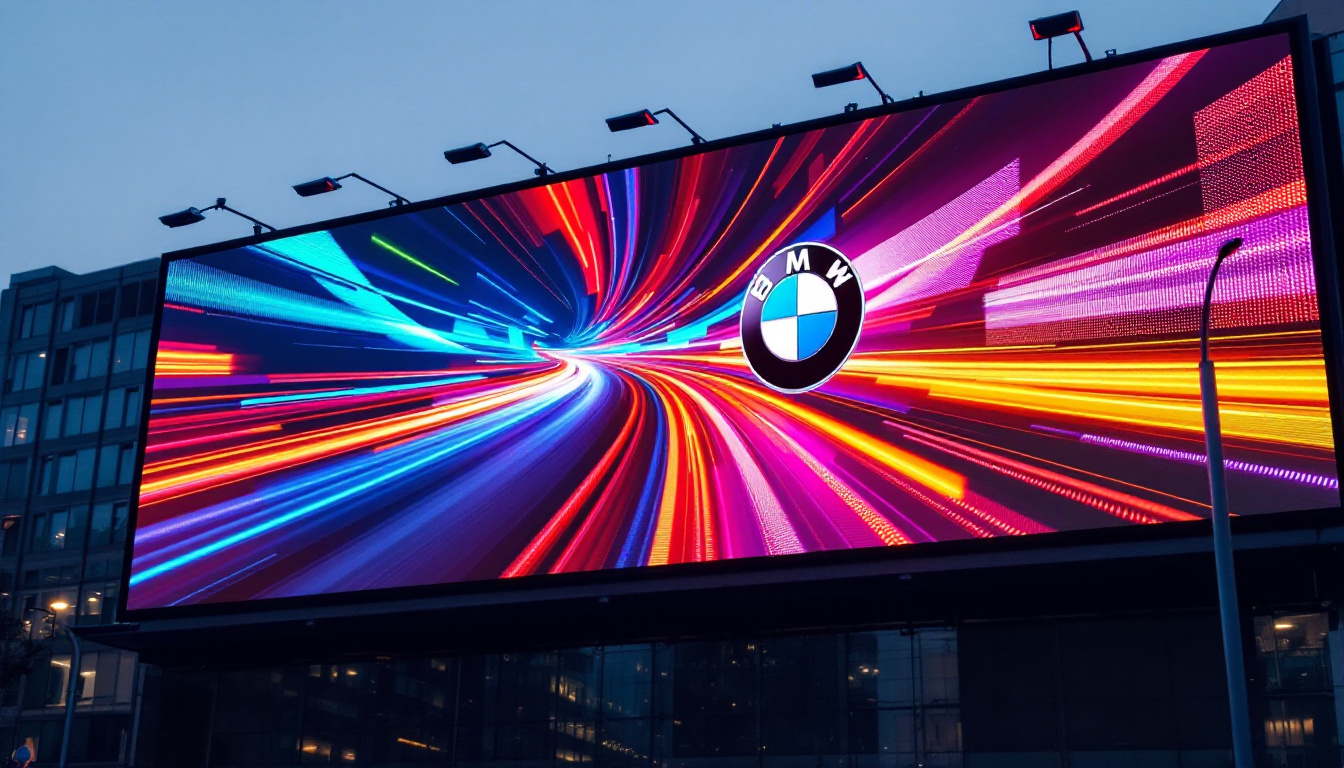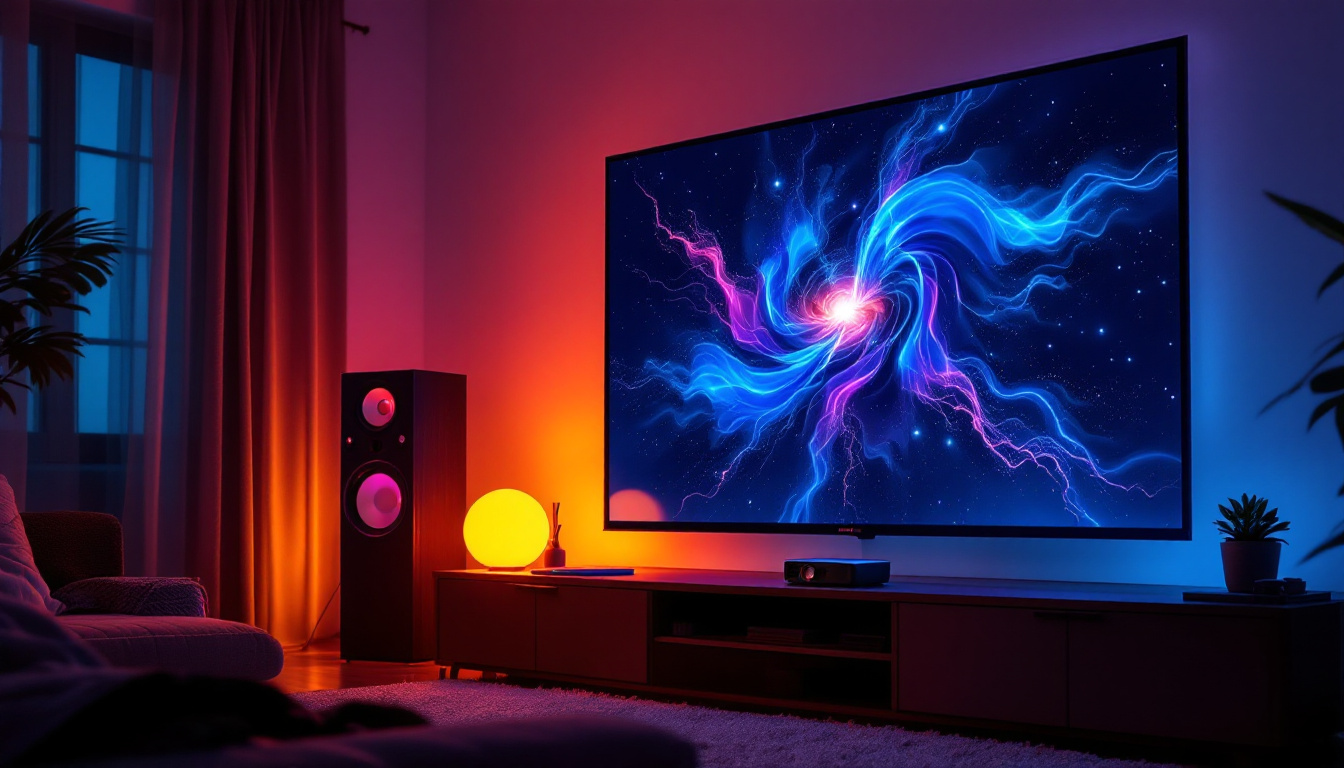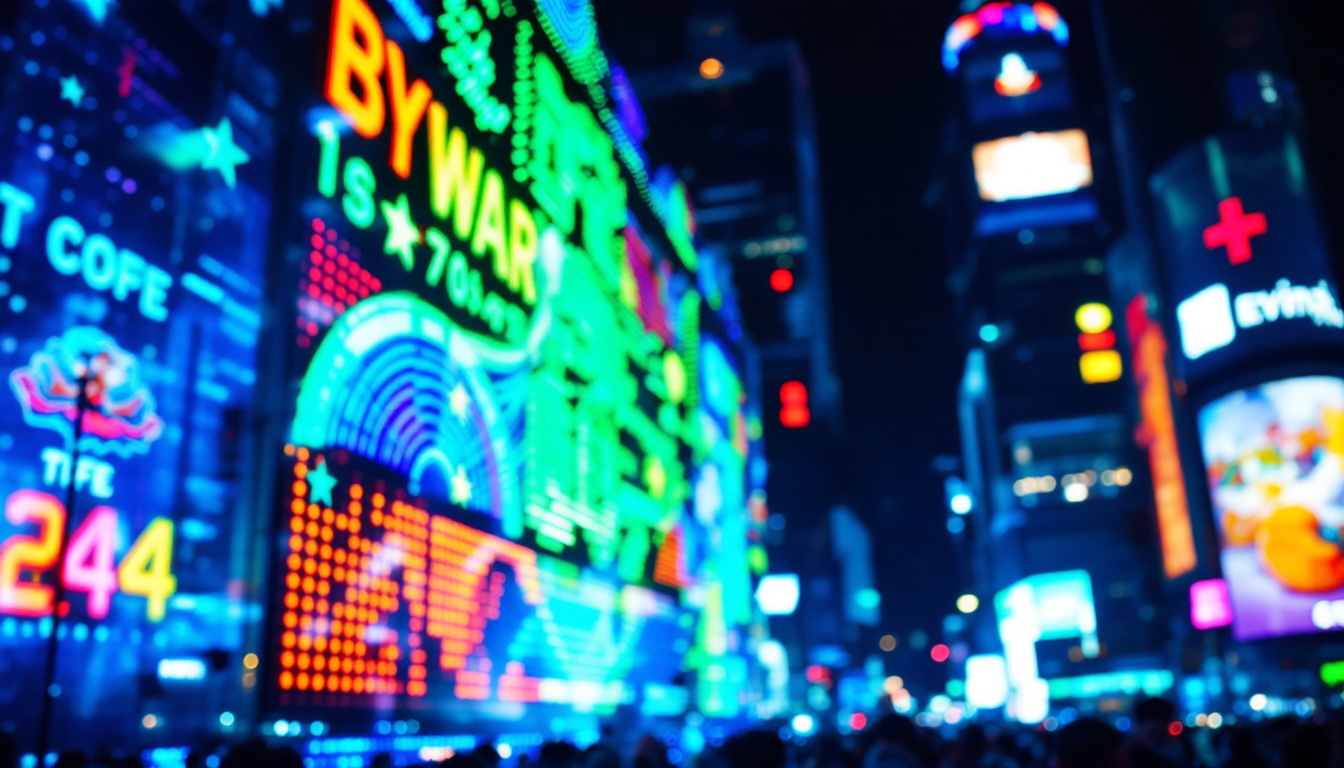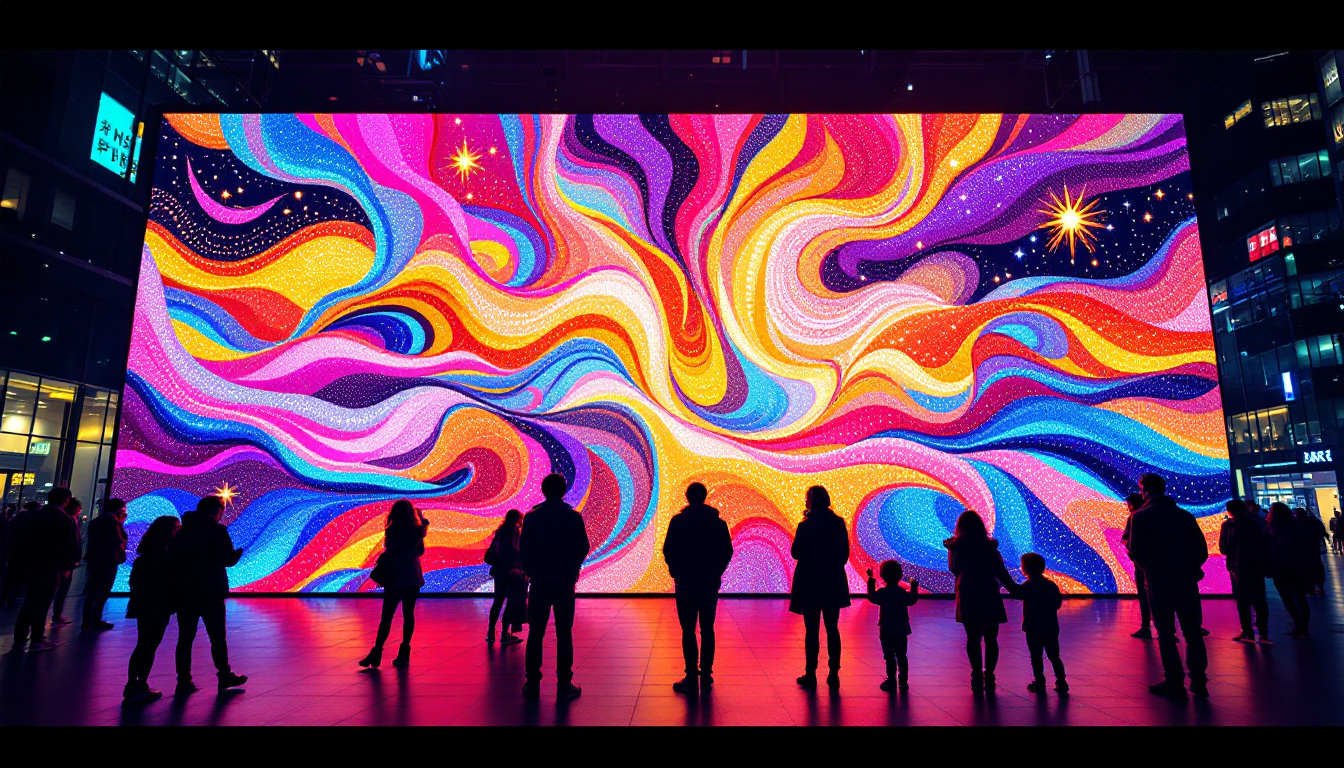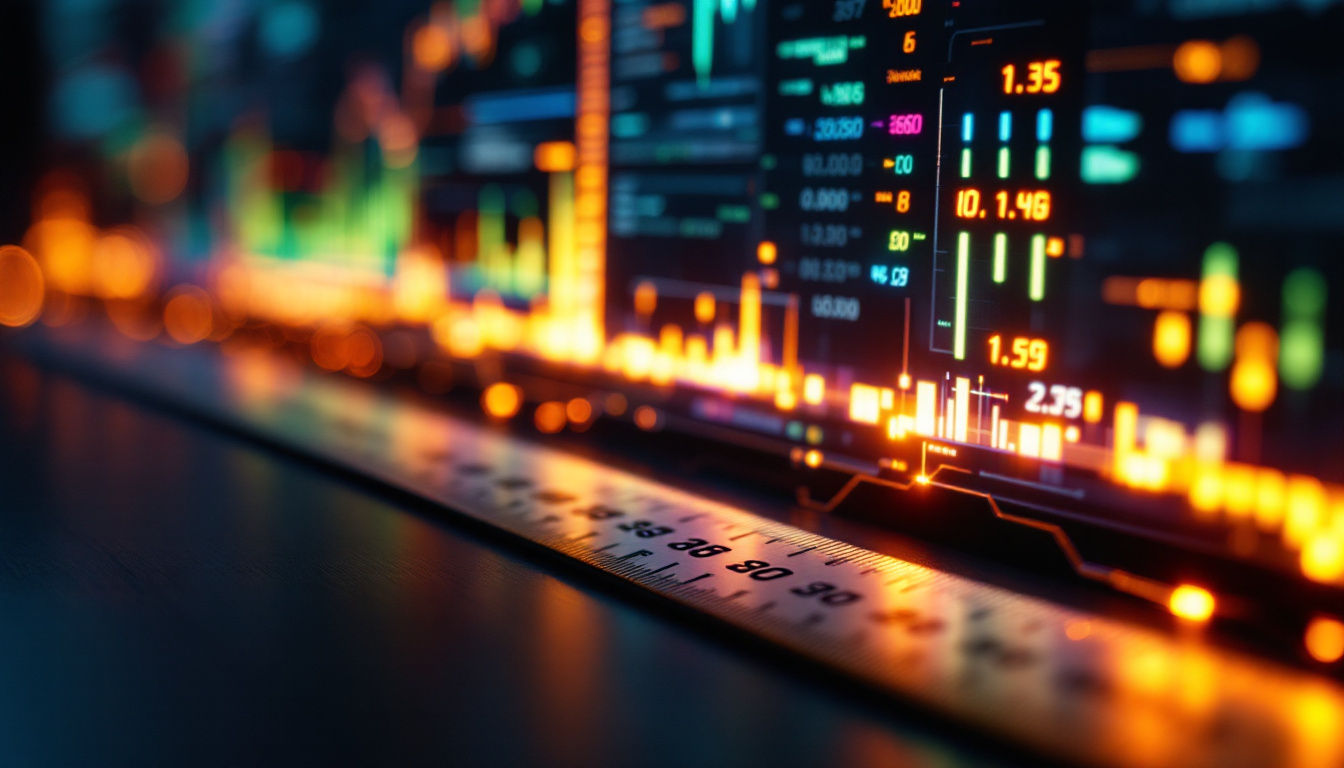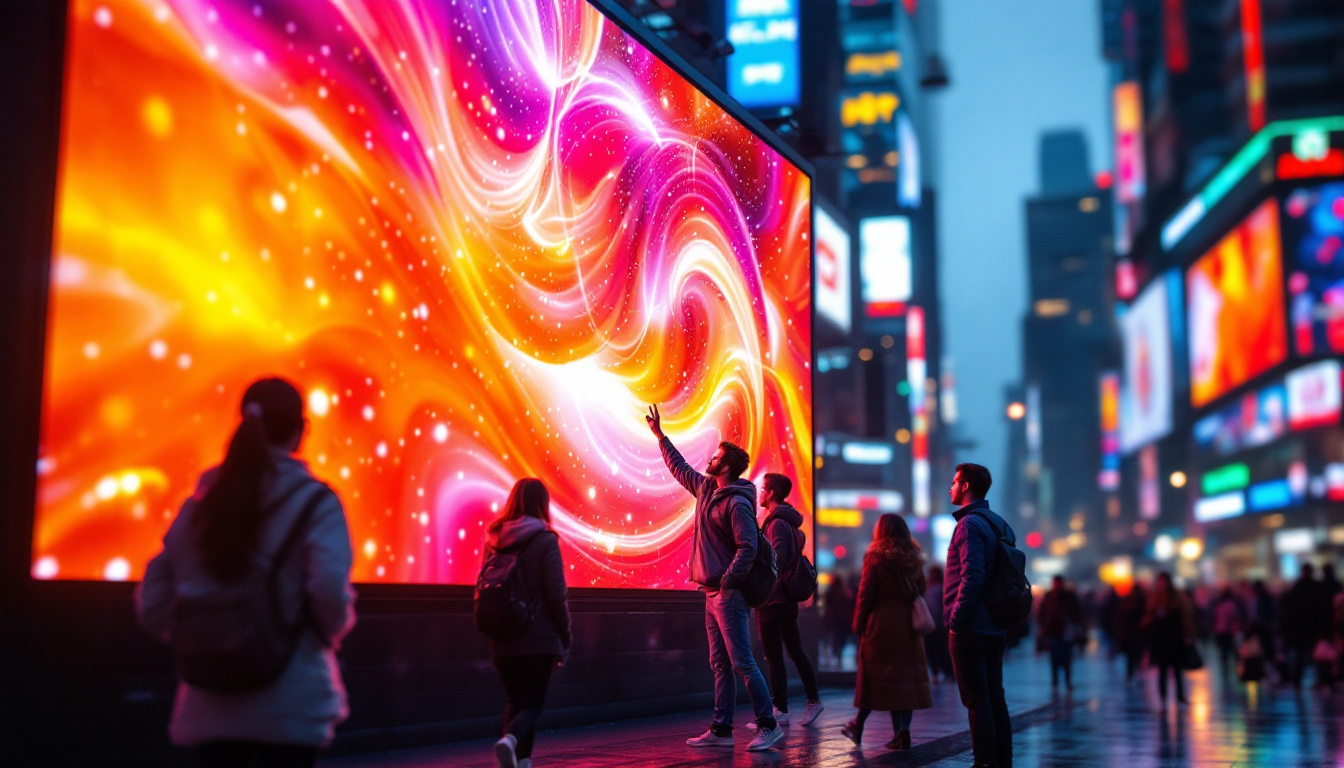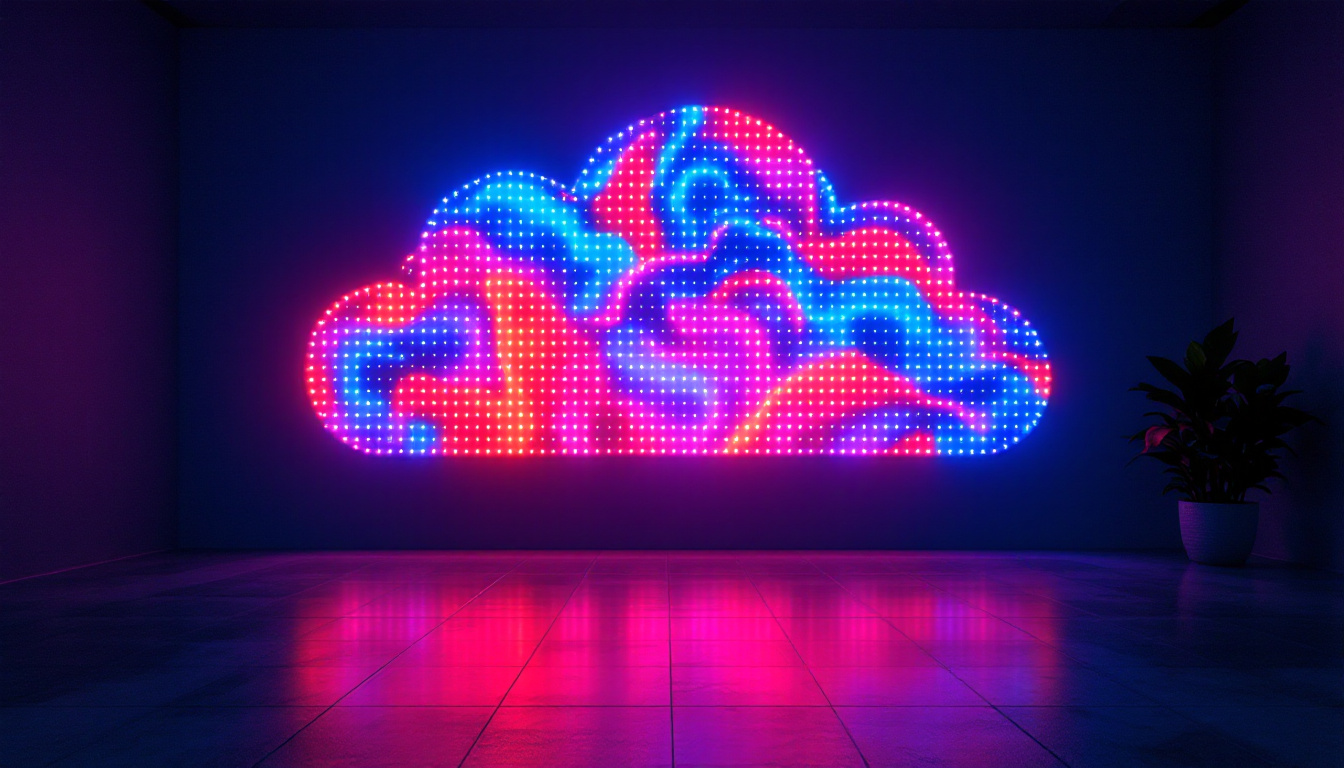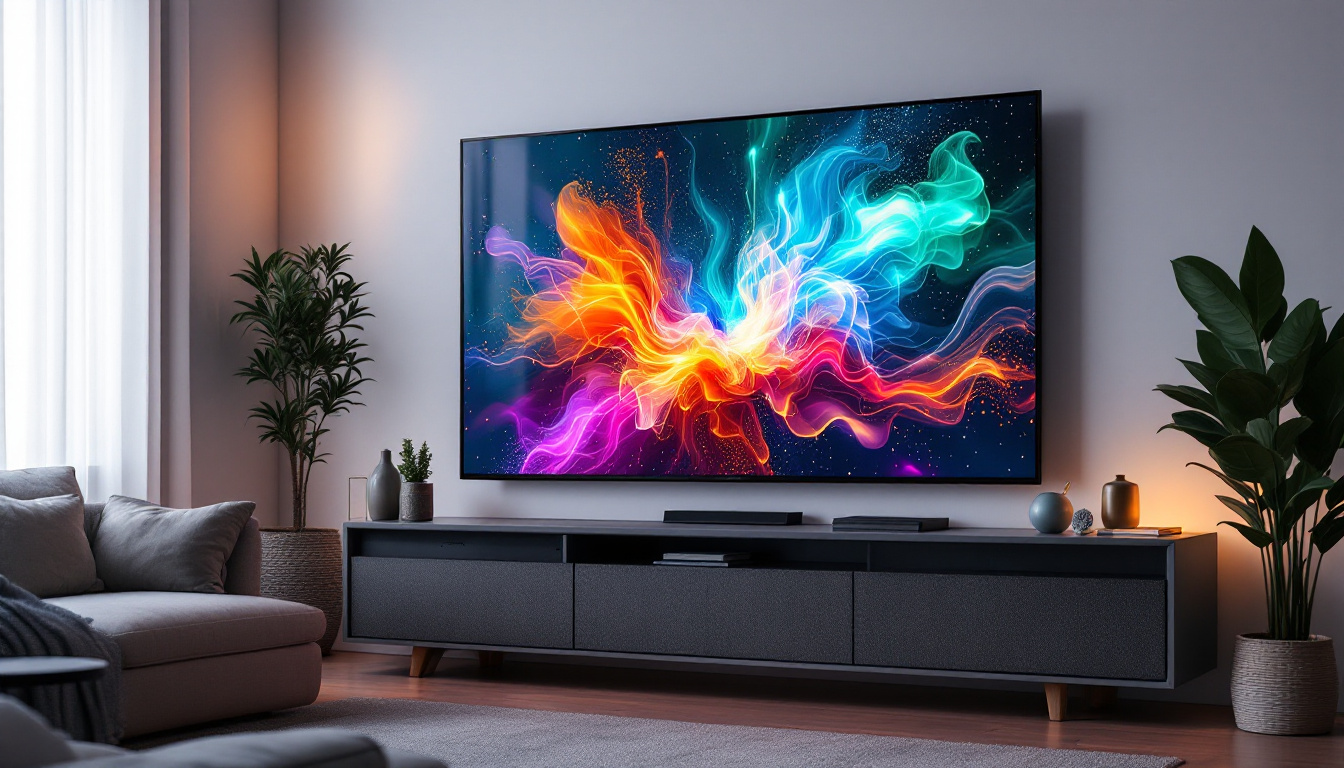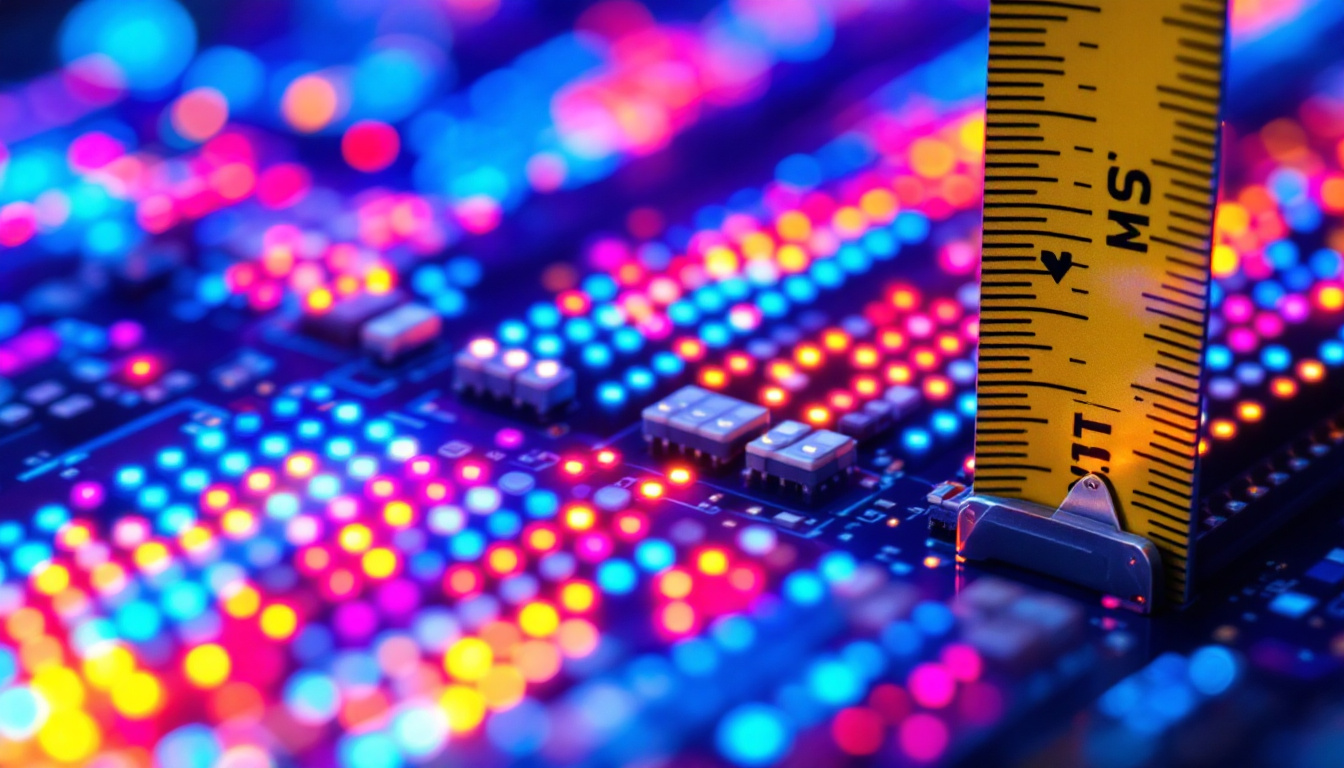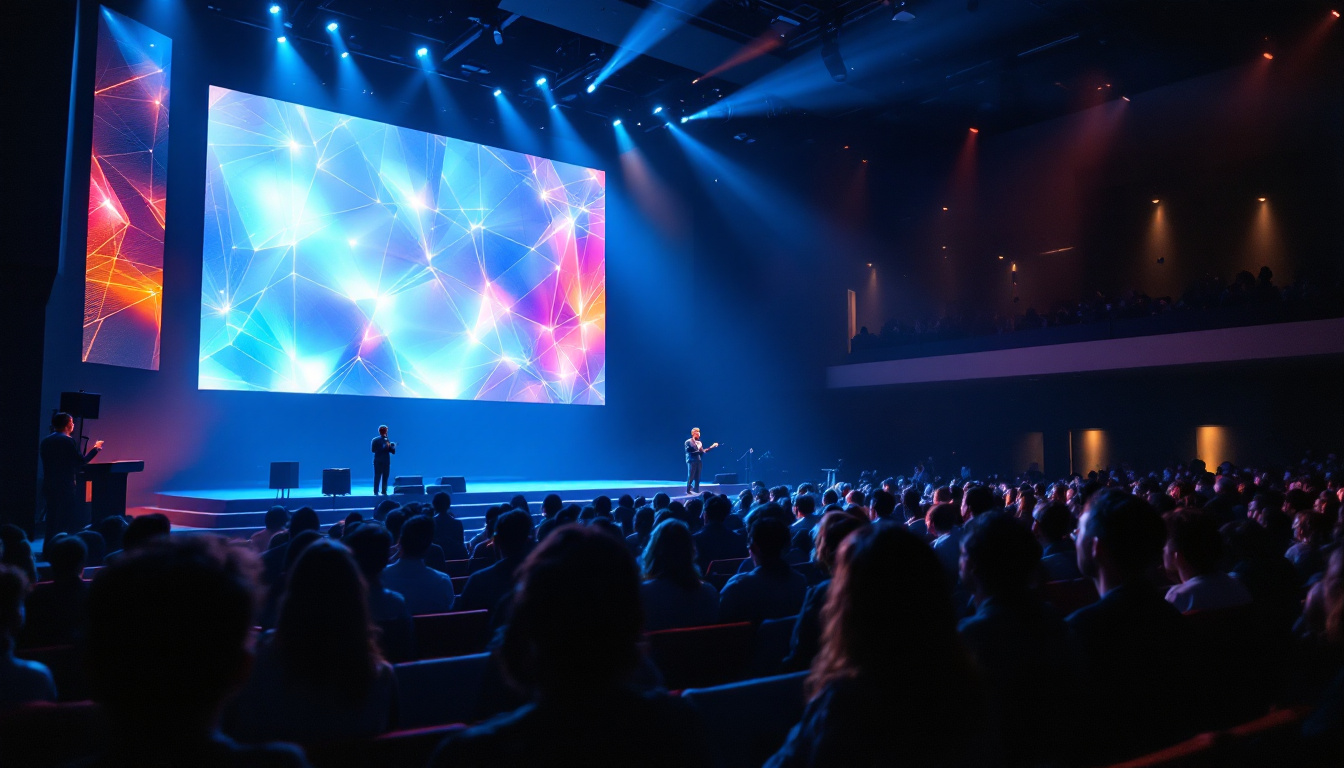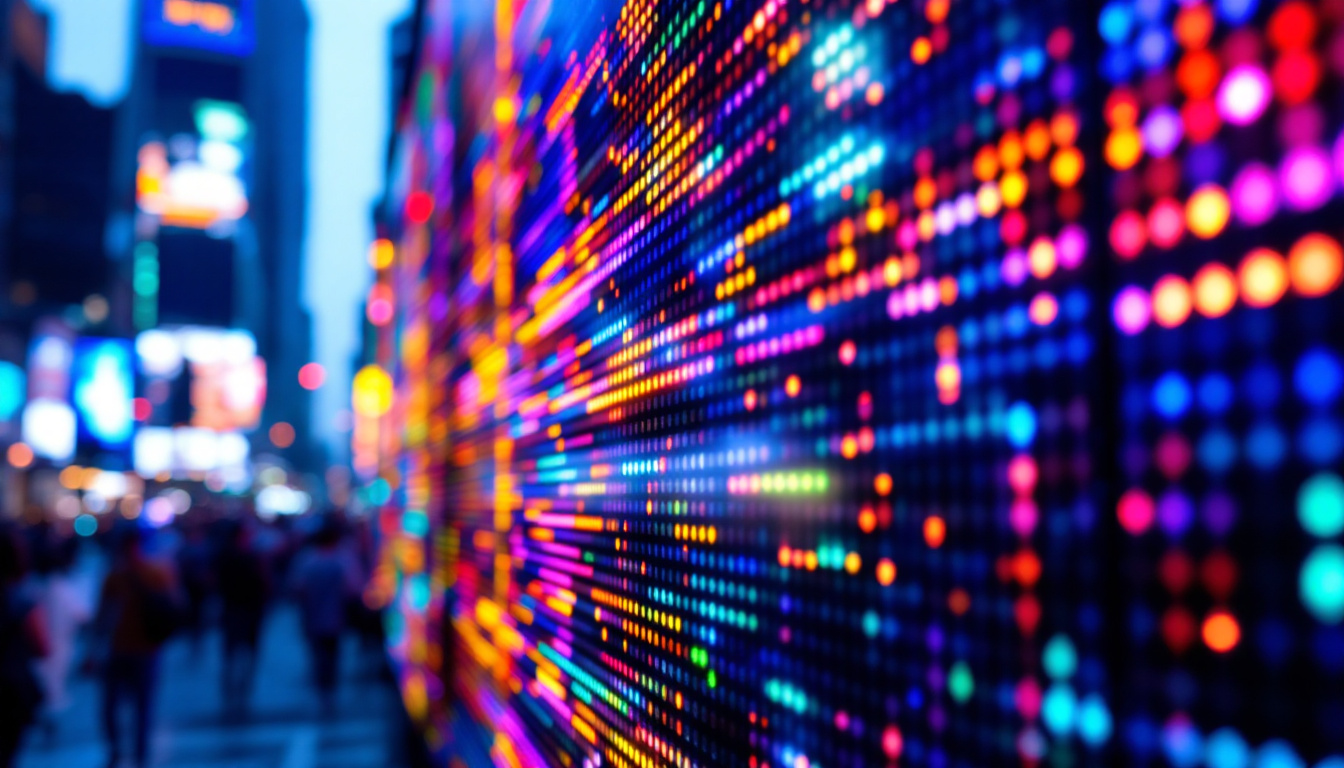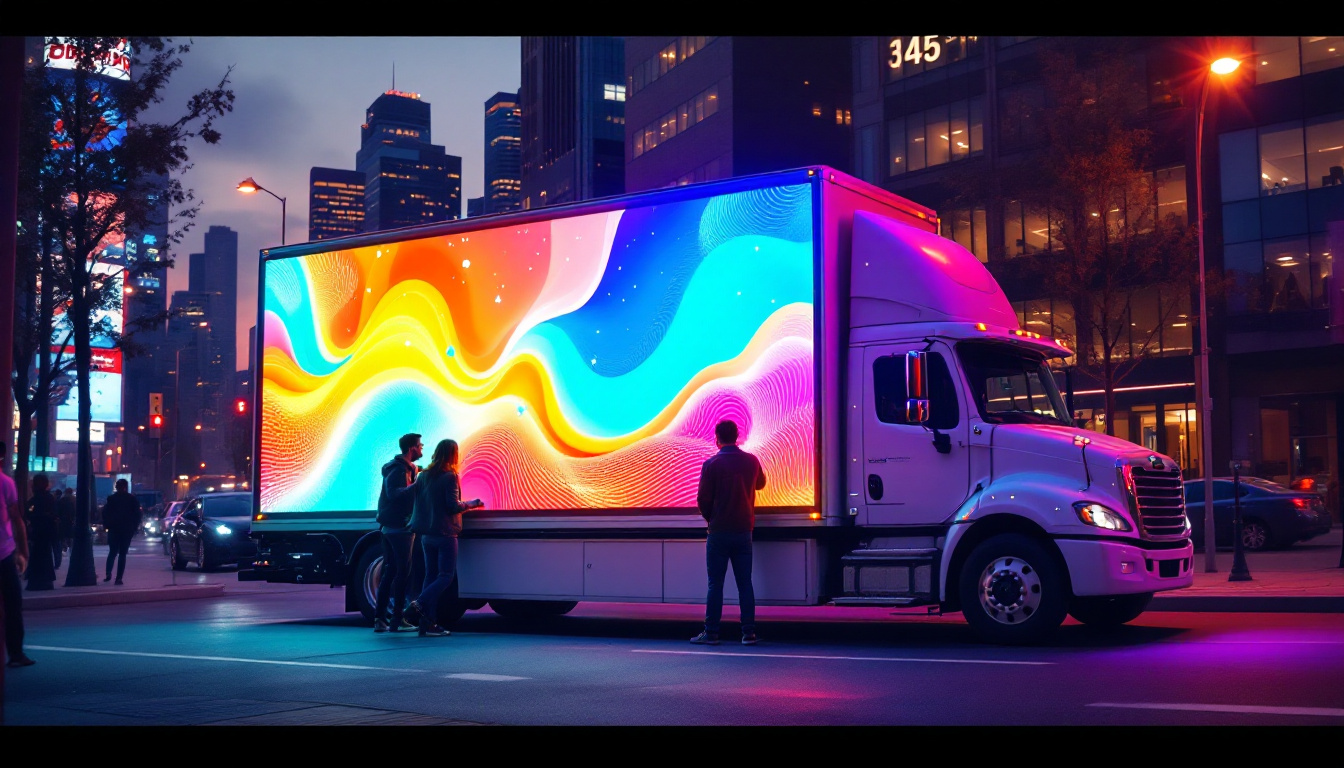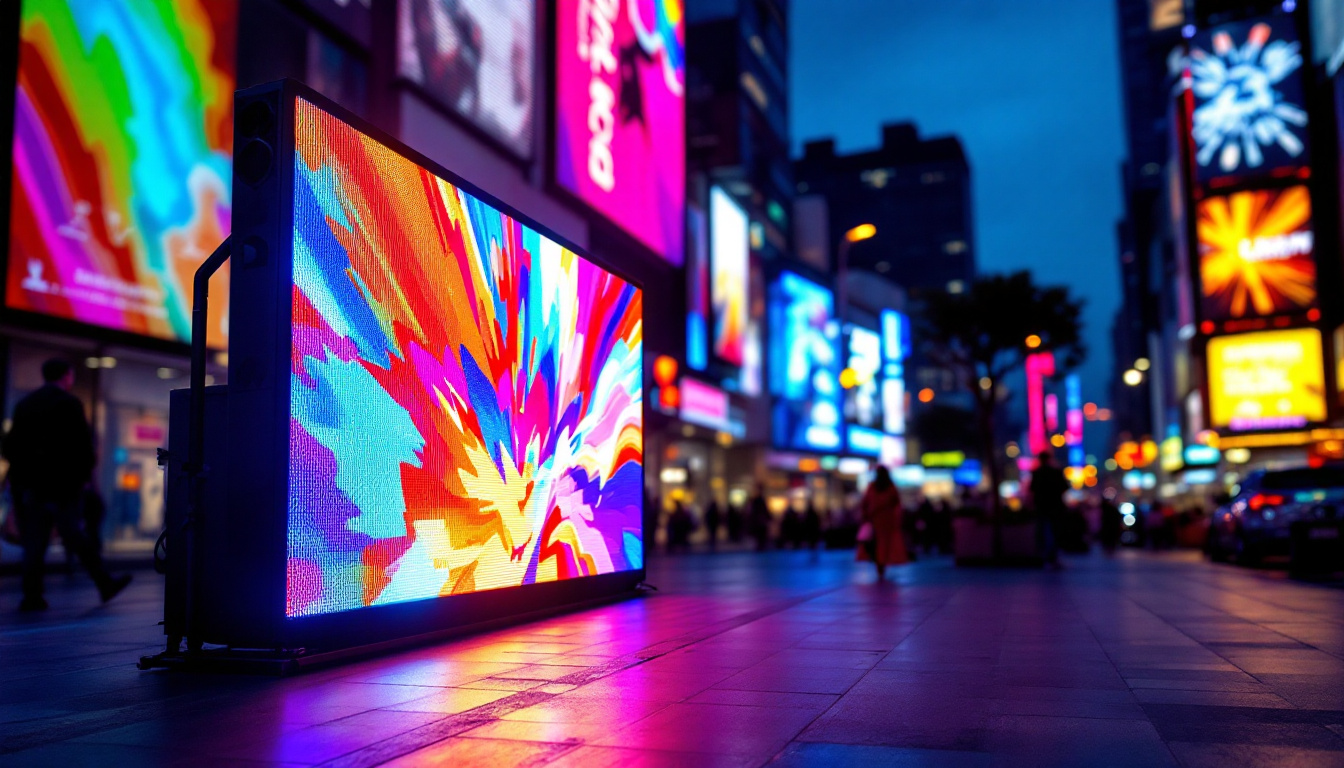In the world of advertising and communication, LED displays have become a prominent feature. Their vibrant colors, energy efficiency, and versatility make them an ideal choice for businesses looking to capture attention. This article delves into the intricacies of LED displays, focusing on their technology, applications, and advantages.
Understanding LED Technology
Light Emitting Diodes (LEDs) are semiconductor devices that emit light when an electric current passes through them. Unlike traditional incandescent bulbs, LEDs are much more energy-efficient and have a longer lifespan. This technology has revolutionized the way displays are designed and used. The compact size and versatility of LEDs have made them a preferred choice in various applications, from home lighting to large-scale digital billboards, fundamentally altering the landscape of illumination and display technology.
How LEDs Work
At the core of LED technology is the principle of electroluminescence. When electrons move through the semiconductor material, they release energy in the form of photons, which is visible light. The color of the light emitted depends on the materials used in the semiconductor. For instance, using different combinations of gallium, arsenic, and phosphorus can produce various colors. This process is highly efficient, resulting in minimal energy loss as heat, which is a significant advantage over traditional lighting methods.
LEDs can be combined to form pixels, which are the building blocks of an LED display. Each pixel consists of red, green, and blue (RGB) diodes that can be adjusted in intensity to create a wide spectrum of colors. By manipulating the brightness of these three colors, an LED display can produce millions of different hues and shades. This capability allows for stunning visual displays in everything from televisions to digital art installations, enabling creators to push the boundaries of visual expression.
Types of LED Displays
LED displays come in various forms, each suited for specific applications. The most common types include:
- Indoor LED Displays: These are typically used in shopping malls, airports, and conference rooms. They offer high resolution and brightness, making them ideal for close viewing.
- Outdoor LED Displays: Designed to withstand the elements, outdoor displays are often used for billboards and advertising. They are built to be brighter and more durable than indoor versions.
- Transparent LED Displays: These innovative displays allow light to pass through, making them perfect for storefronts and exhibitions. They provide visibility while still showcasing the advertisement.
In addition to these common types, there are also specialized LED displays such as flexible LED screens, which can be bent or shaped to fit unique spaces and designs. This flexibility opens up new possibilities for creative advertising and artistic installations. Furthermore, advancements in technology have led to the development of microLED displays, which offer even greater resolution and color accuracy, paving the way for next-generation screens in consumer electronics. As LED technology continues to evolve, we can expect to see even more innovative applications that enhance our visual experiences in everyday life.
Applications of LED Displays
The versatility of LED displays allows them to be used in a wide range of applications. From advertising to entertainment, their impact is significant across various sectors.
Advertising and Marketing
One of the most prominent uses of LED displays is in advertising. Businesses utilize these displays to promote products and services in a dynamic and engaging manner. The ability to change content quickly and easily allows for real-time marketing strategies, making it possible to tailor messages based on audience demographics or time of day.
Moreover, the bright and colorful visuals of LED displays attract attention, increasing foot traffic and engagement. This makes them a valuable asset for retail stores, restaurants, and event venues looking to enhance their visibility. Additionally, the integration of motion graphics and interactive elements can further captivate potential customers, leading to higher conversion rates. As technology advances, the use of augmented reality (AR) in conjunction with LED displays is also becoming more prevalent, creating even more immersive advertising experiences that resonate with consumers.
Entertainment and Events
LED displays have transformed the entertainment industry. Concerts, sports events, and festivals often feature large LED screens that provide audiences with an immersive experience. These displays can showcase live feeds, video content, and graphics that enhance the overall atmosphere of the event.
Additionally, LED technology is used in theaters and cinemas to create stunning visual effects. The flexibility of LED displays allows for creative staging and lighting, elevating performances to new heights. The ability to synchronize visuals with soundtracks or live performances adds a layer of depth that traditional projection methods cannot achieve. Moreover, as LED technology continues to evolve, we are seeing innovations such as transparent LED screens and flexible displays that can be shaped to fit unique venues, further expanding the possibilities for artistic expression in live events.
Information and Navigation
In public spaces, LED displays serve as information boards, providing essential updates and navigation assistance. Airports, train stations, and bus terminals utilize LED screens to display arrival and departure times, gate information, and other announcements. This enhances the travel experience by keeping passengers informed and reducing confusion.
Furthermore, municipalities are increasingly using LED displays for public service announcements and emergency alerts, ensuring that vital information reaches the community promptly. These displays can also be utilized for educational purposes, such as displaying real-time data on local events, weather updates, or community initiatives. By incorporating interactive features, such as touch screens, these information boards can engage the public further, allowing users to access additional details or navigate through various services available in the area. This not only improves the efficiency of information dissemination but also fosters a more informed and connected community.
Advantages of LED Displays
LED displays offer numerous advantages over traditional display technologies, making them a preferred choice for many applications. Understanding these benefits can help businesses make informed decisions when considering display options.
Energy Efficiency
One of the most significant advantages of LED displays is their energy efficiency. LEDs consume significantly less power compared to traditional lighting technologies, which translates to lower energy bills and a reduced carbon footprint. This makes them an environmentally friendly option, appealing to businesses that prioritize sustainability.
Additionally, the long lifespan of LEDs—often exceeding 50,000 hours—means that they require less frequent replacements, further contributing to energy savings and reduced waste.
Brightness and Visibility
LED displays are known for their exceptional brightness, making them easily visible in various lighting conditions, including direct sunlight. This is particularly important for outdoor applications where visibility can be compromised by ambient light. The high contrast ratio of LED displays also enhances image quality, ensuring that content remains clear and vibrant.
Furthermore, the ability to adjust brightness levels allows for optimal viewing experiences, whether in dimly lit environments or bright outdoor settings.
Versatility and Customization
LED displays can be customized to fit a wide range of shapes and sizes, making them suitable for various applications. They can be curved, flexible, or even transparent, allowing for creative installations that traditional displays cannot achieve.
This versatility extends to content as well. Businesses can easily update and change their messaging, ensuring that their displays remain relevant and engaging. This adaptability is particularly beneficial in fast-paced environments where information needs to be updated frequently.
Challenges and Considerations
While LED displays offer numerous benefits, there are also challenges and considerations that businesses must keep in mind when implementing this technology.
Initial Costs
The initial investment for LED displays can be higher than traditional display options. Although the long-term savings on energy and maintenance can offset these costs, businesses must evaluate their budgets and determine the return on investment. It is essential to consider the potential increase in revenue generated by enhanced visibility and engagement when assessing the overall financial impact.
Maintenance and Technical Expertise
LED displays, while durable, do require regular maintenance to ensure optimal performance. This includes cleaning, software updates, and occasional repairs. Businesses may need to invest in technical expertise to manage these tasks effectively, which can add to operational costs.
Additionally, as technology evolves, staying updated with the latest advancements in LED display technology is crucial. This may require ongoing training for staff or hiring specialized technicians.
Content Management
Creating engaging content for LED displays is essential for maximizing their impact. Businesses must invest time and resources into developing high-quality visuals and messages that resonate with their target audience. This can be a challenge, especially for smaller businesses with limited marketing budgets.
Furthermore, effective content management systems are necessary to streamline the process of updating and scheduling content. Choosing the right software can significantly enhance the efficiency of managing LED displays.
The Future of LED Displays
The future of LED displays looks promising as technology continues to advance. Innovations in design, functionality, and interactivity are expected to shape the landscape of visual communication.
Emerging Technologies
As LED technology evolves, new developments such as microLED and OLED displays are gaining traction. MicroLED technology offers even higher resolutions and improved energy efficiency, making it an attractive option for high-end applications. OLED displays, known for their vibrant colors and deep blacks, are also becoming more prevalent in various sectors.
These emerging technologies may offer businesses more choices when selecting display solutions, allowing for even greater customization and enhanced visual experiences.
Integration with Smart Technologies
The integration of LED displays with smart technologies is another trend to watch. As the Internet of Things (IoT) continues to expand, businesses can leverage data analytics and real-time information to create dynamic and responsive displays. This could lead to personalized advertising experiences and improved audience engagement.
Moreover, the use of artificial intelligence (AI) in content creation and management will streamline processes, making it easier for businesses to deliver relevant messages to their audiences.
Conclusion
LED displays have transformed the way businesses communicate and engage with their audiences. Their vibrant colors, energy efficiency, and versatility make them an invaluable tool in advertising, entertainment, and information dissemination. While there are challenges to consider, the advantages of LED technology far outweigh the drawbacks.
As technology continues to evolve, the future of LED displays promises even more exciting possibilities. Businesses that embrace this technology will not only enhance their visibility but also stay ahead in an increasingly competitive landscape. With the right approach, LED displays can serve as a powerful asset in any marketing strategy.
Illuminate Your Message with LumenMatrix
Ready to elevate your brand’s presence and captivate your audience like never before? Discover LumenMatrix’s innovative LED display solutions, crafted to bring your visual communication to life. From vibrant Indoor LED Walls to dynamic Outdoor Displays and beyond, our technology is designed to make an impact. Experience the future of digital signage with LumenMatrix and transform the way you share your message. Check out LumenMatrix LED Display Solutions today and light up your brand’s potential.

